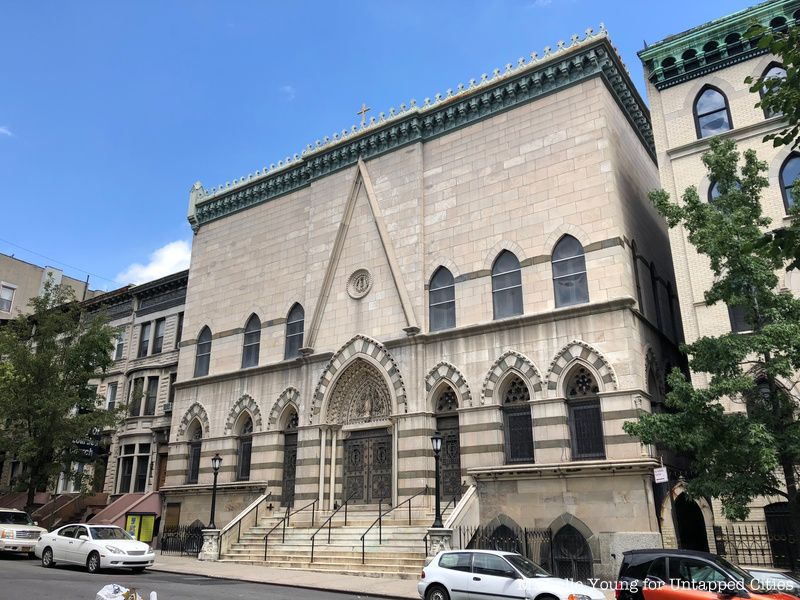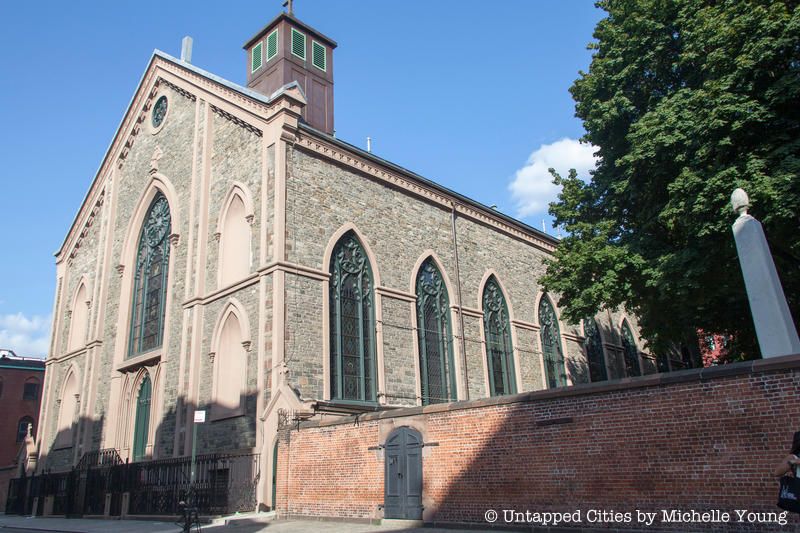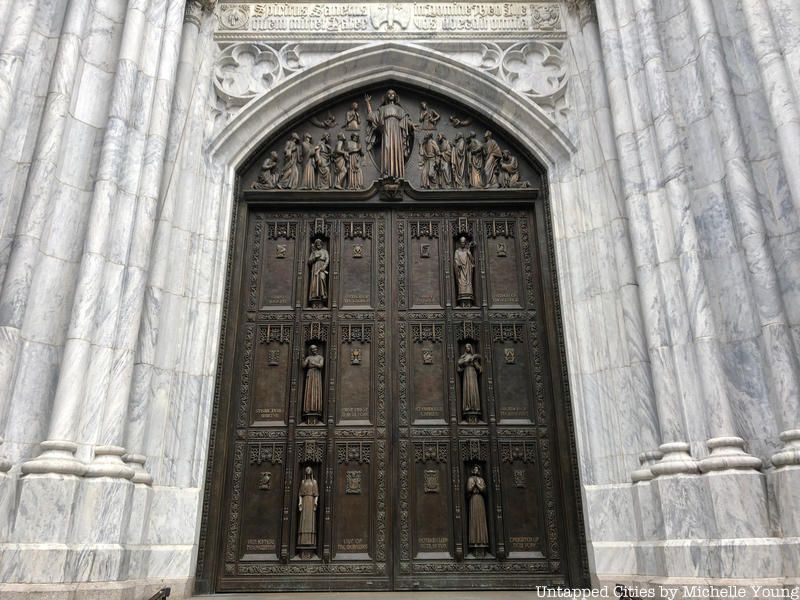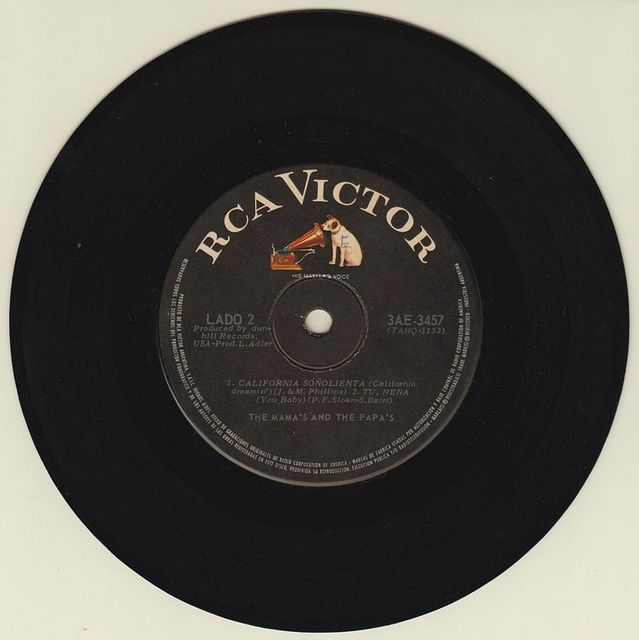NYC’s Forgotten ‘War on Christmas Trees’
Discover how an obscure holiday crackdown affects festive street vendors today!


St. Patrick’s Cathedral is one of the landmarks of Midtown Manhattan. Its Neo-Gothic aesthetic contrasts starkly with the Art Deco Rockefeller Center, thereby ensuring that no one walking on Fifth Avenue will miss its grandeur. The main part of the Cathedral was completed in 1878 and designed by architect James Renwick. St. Patrick’s Cathedral, which served as the sear of the Archdiocese of New York, has recently undergone a thorough renovation and appears to be sparkling like new. The next time you find yourself in Midtown, stop by St. Patrick’s and be impressed by these 10 facts about one of the City’s most famous Cathedrals.

On August 15, 1858, the cornerstone of St. Patrick’s Cathedral was laid by Archbishop John Hughes. The stone, which had been hewn by a 22-year-old Irish immigrant, was left open for two years so that New Yorkers could leave offerings in it. The cornerstone also contained “a parchment litany in Latin of ecclesiastical and government officialdom and a celebratory news report on the recent laying of the first Atlantic cable, heralding instantaneous communication with the continent from which so many of New York’s immigrant Catholics hailed.” It was sealed exactly two years later on August 15, 1860; then it went missing.
Today, no one knows exactly where the cornerstone is located and mysteriously the Archbishop John Hughes wrote that the cornerstone, “in all probability, will never be disturbed by human agency,” at the time it was sealed. The Cathedral considers it one of its greatest mysteries. According to some theories the cornerstone is long gone, according to others, it is still hiding along the Fifth Avenue facade of the Cathedral, at 50th Street.

According to A Week in New York, a guidebook of New York City from 1891, “the windows of St. Patrick’s Cathedral have been called the finest collection of examples of painted glass in the world.” Many of the Cathedral’s stained glass windows were designed and created in Chartres, France, whose studios have been renowned for their stained glass since the Middle Ages. Other windows in the cathedral were made in Birmingham, England and Boston. A few of the windows were donated by New York congregations including from the diocese of Albany, the diocese of Buffalo, the diocese of Brooklyn, and Old Saint Patrick’s Cathedral. Another, the Window of St. Charles Borromeo, depicting a procession in Milan of plague stricken citizens was a gift of the restauranteur L. Delmonico.
Also check out St. Jean Baptiste, another New York City church graced by stained glass windows from Chartres

Entrance to the crypt of St. Patrick Cathedral crypt
A pair of copper doors, just below the altar, lead to St. Patrick’s crypt. The crypt, which is rarely opened to the public, is small and has a “black, speckled floor, light gray marble and fluorescent lighting… [and a] gold prie-dieu, or kneeling prayer desk.” The crypt is home to many of New York City’s former Archbishops and Cardinals, including most recently John Cardinal O’Connor and Edward Cardinal Egan. Additionally, Pierre Toussaint, a former slave and philanthropist, is buried in the crypt. Toussaint was originally buried at St. Patrick’s Old Cathedral. When Pope John Paul II declared him to be Venerable, a step towards possible canonization, Toussaint was reinterred at St. Patrick’s Cathedral.

In 1906, St Patrick’s Cathedral completed its Lady Chapel. When the chapel was added to the eastern end of the church, the church discarded part of its original eastern facade and stained glass windows. At the same time, Joseph McMahon had been tasked by the diocese with setting up a parish in Hamilton Heights. In order to make the best use of his budget, McMahon used discarded remnants and relics to construct his new church, Our Lady of Lourdes. The front of the church came from the National Academy Building, the stairs from A. T. Stewart’s mansion, the iron beams and windows from the Catholic Orphan Asylum, and the rear of the church (and some of the stained glass windows) were taken from the eastern end of St. Patrick’s Cathedral, which were discarded when the Lady Chapel was constructed.

St. Patrick’s Cathedral is the second New York City church to bear that name. At the turn of the nineteenth century, New York City had only one Catholic Church, St. Peter’s. The City’s burgeoning Catholic population necessitated a new church, one that could serve as the center of the newly formed See. Between 1809 and 1815, St. Patrick’s Cathedral was constructed on Mulberry Street. Within a few decades, the City’s Catholic population had outgrown St. Patrick’s Cathedral and a new site was chosen a few miles north for a new cathedral. Except for two years (1866-1868) when a fire gutted the old Cathedral and the new one had not been completed, New York City has not been without a St. Patrick’s Cathedral in over two hundred years. Today, there is still some confusion between the two churches. Since 2010, the Mulberry Street location is officially known as the Basilica of Saint Patrick’s Old Cathedral.
Check out some of the secrets of the Crypt of Old Saint Patrick’s Cathedral.
Did you know the Godfather was filmed at Old Saint Patrick’s Cathedral?

St. Patrick’s main doors are made of bronze and each weigh 9,200 pounds. They were officially dedicated and blessed by Cardinal Spellman on December 23, 1949. The doors, containing standard images of Jesus, Mary, Joseph, St. Patrick and St. John the Baptist, were designed so perfectly that one person can open them with a single hand. The remaining figures depicted on the doors have a connection to New York, and include Isaac Jogues, a martyr and the first Catholic missionary to enter New York, Mother Cabrini, the first American citizen to be canonized, Kateri Tekakwitha, the first Native American to be canonized, and Elizabeth Ann Seton the first American citizen to be canonized.
Check out our coverage of 5 Other Saintly Sites

John La Farge was one of the preeminent 19th century American designers. His New York City commissions, which range from murals to altarpieces to stained glass windows, can be seen in the Church of the Ascension, St. Paul’s Chapel, and the Metropolitan Museum of Art. La Farge’s eldest son Christopher Grant La Farge would go on to design the Cathedral of Saint John the Divine, the Bronx Zoo, and the original artwork for the subway. John La Farge designed the baptistery for St. Patrick’s Cathedral, which St. Patrick’s contends “is recognized as one of the most aesthetically inspiring areas within the Cathedral.”

Image via Wikipedia
In 1963, Michelle Philips and her husband, John, went for a walk along Fifth Avenue. The couple, who were members of the folk group, the New Frontiersmen, were in New York City seeking fame and fortune. During that winter, they were staying at the Albert Hotel, near Washington Square Park, while fame eluded them. The night after their Fifth Avenue walk, John woke up in the middle of the night and began composing a song. Michelle provided the lyrics for beginning of the second verse using St. Patrick’s Cathedral as inspiration: ” Stopped in to church / I passed along the way / Well, I got down on my knees / And I began to pray.” The song, as well as the Michelle and John Philips, became famous when they joined the Mamas & the Papas, a few years later.

View of St. Patrick’s Cathedral from the Rockefeller Center elevated gardens, 620 Loft and Garden
According to St. Patrick’s Cathedral, “From October 1888 until October 1890, St. Patrick’s Cathedral at 330 feet high was the tallest building in New York City and the second tallest in America surpassed only by Philadelphia’s City Hall.” As the New York World Building was not begun until 1889, it does that St. Patrick’s Cathedral was indeed the tallest building in New York City for two years after the spires were added in 1888. And if you don’t count the antenna spire of the New York World Building (the roof went to 309 feet, the antenna to 349 feet), St. Patrick’s would have been taller, As the world’s tallest buildings in this era were primarily focused on the new skyscrapers, and St. Patrick’s was certainly not the tallest cathedral in the world during this time, it is often left off of discussions about the world’s tallest buildings historically.

On April 3, 1920, Francis Scott Key Fitzgerald (named after his ancestor Francis Scott Key) married Zelda Sayre, a Montgomery socialite. They met in 1918 at a country club and Fitzgerald immediately fell in love Zelda. Zelda was dubious of his ability to provide for them and broke off their informal engagement. Once This Side of Paradise was accepted for publication her worries disappeared. Their wedding took place in the rectory of St. Patrick’s Cathedral one week after the novel’s release. It was a very small affair, with just 8 invitees including, Zelda’s three sisters, two brothers-in-law, and the best man. After the wedding, the Fitzgerald’s honeymooned at The Biltmore Hotel and later The Commodore Hotel (since they were thrown out of The Biltmore for being overly rowdy).
Next check out the Top 10 Secrets of Trinity Church and the Top 10 Secrets of Grand Central Terminal.
Subscribe to our newsletter